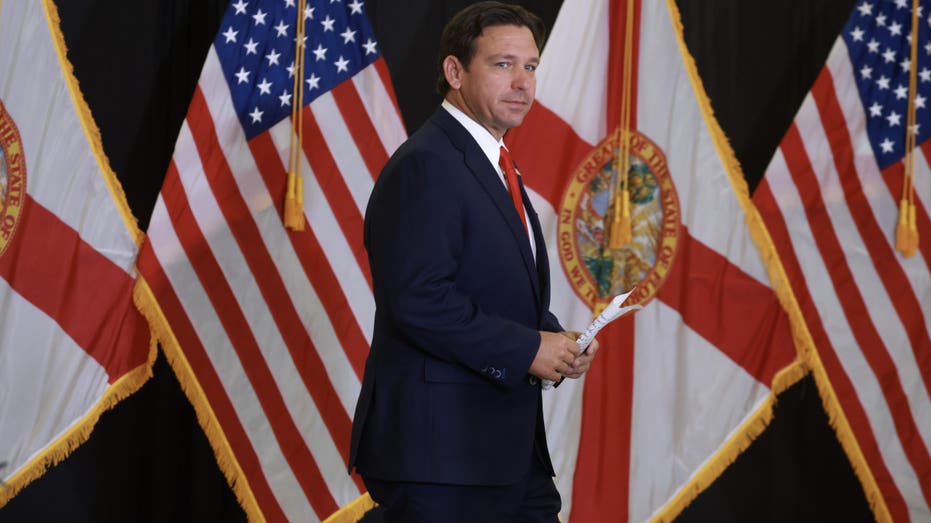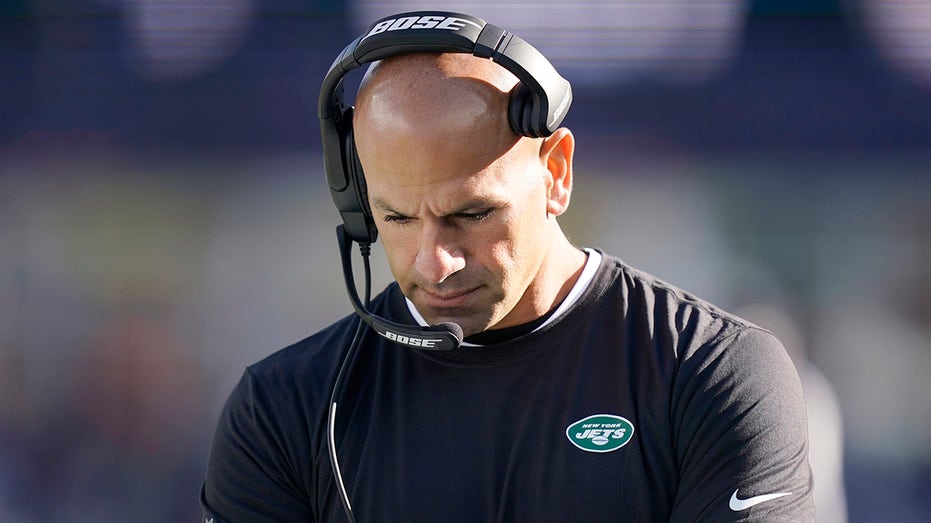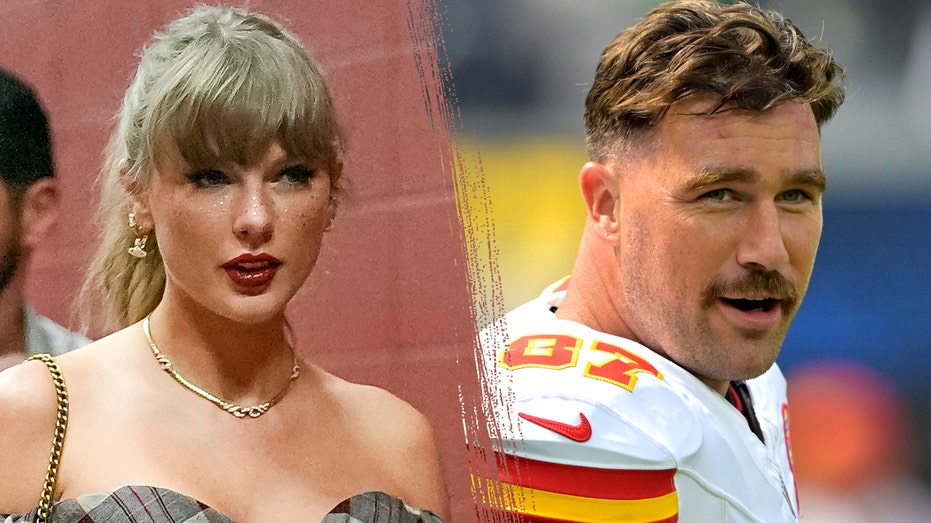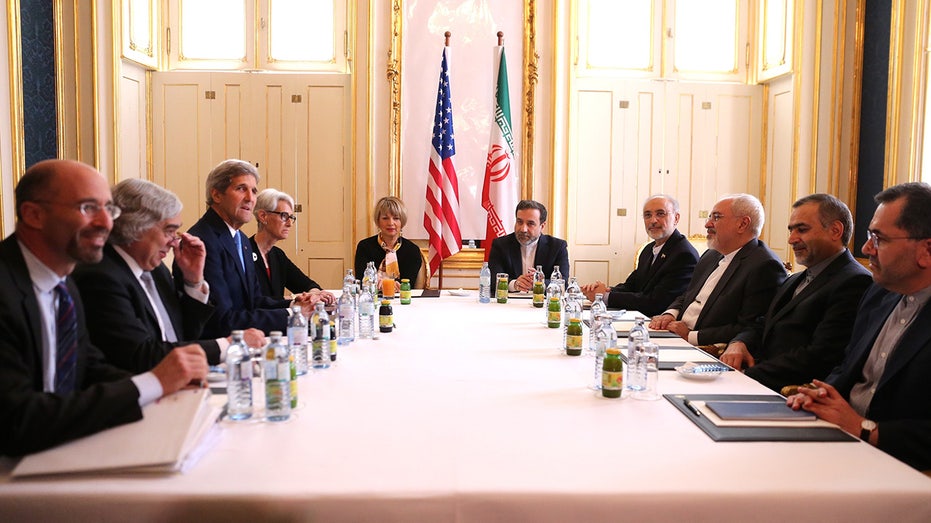Director Sean Baker’s films have been described as modern-day fairy tales, yet it might be more apt to say that his films interrogate whether fairy tales have a place in the messiness of our modern world. There always comes a moment where the magic and grace his characters can find in the everyday clashes with the chaotic and complicated web of injustices (late-stage capitalism, bigotry, and abuse from the powerful to name a few) present in their environments. This is a tension he mines to equally humorous and harrowing effect with his latest cinematic offering, “Anora.”
Embodying the radiance and earnestness of its titular character, “Anora” follows New York City stripper Ani (Mikey Madison) whose passable grasp on Russian lands her in the sights of the flamboyant and spoiled Ivan (Mark Eydelshteyn). Ivan, who goes by Vanya, is the son of a wealthy Russian oligarch and is immediately smitten with Ani and her services. The two spend more time outside of the club Ani works at and eventually elope in Las Vegas. When Vanya’s parents learn of it, they send Vanya’s handler Toros (Baker’s longtime collaborator Karren Karagulian) as well as two henchmen Garnick (Vache Tovmasyan) and Igor (Yura Borisov) to force the duo to annul the marriage.
It’s only when Vanya leaves his new bride at the altar and mercies of the henchmen that Ani realizes she’s married no Prince Charming but rather Peter Pan; a pleasure-seeking boy whose refusal to grow up and whose wealth has protected him from having to address problems head-on. As Ani, Toros, Garnick, and Igor search for Vanya, Baker weaves in affecting commentary about the dignity of sex work and the ways money imbalances our relationships.
For Baker, “Anora” is his fifth film to center the stories and perspectives of sex workers, a work that began with 2018’s “Starlet,” and continued in films like “Tangerine,” The Florida Project,” and “Red Rocket.” As with those films, his lens towards the sex workers in “Anora” is warm, nonchalant, and caring, acting as a rebuke to the ways society so easily objectifies, criminalizes, and judges those who are simply trying to work and make a living. “We’re showing that it’s all the same and that sex work is real work and it’s hard work.
Like with all jobs, it can feel menial sometimes,” he shared. For Madison, she walked away from the experience with a greater appreciation for the multi-faceted nature of sex work, “Being a sex worker is physically demanding and emotionally demanding … the stamina that it requires to do that kind of work is overwhelming because you’re trying to connect with someone on an intimate level,” she said.
Over Zoom, Baker and Madison spoke separately with RogerEbert.com; this piece combines their interviews into one, fluid conversation. They spoke about filming certain scenes “Borat” style, working with former sex worker Andrea Werhun, who acted as a creative consultant on the film, their approach to filming intimate scenes (or rather “shots”) when the sex was transactional versus when it was not, and crafting ambiguous endings.
This conversation has been edited and condensed for clarity.
Sean, you’ve cited Mikey’s performance in “Once Upon a Time … in Hollywood” and “Scream” as the ones that convinced you and wife and producer, Samantha Quan, to cast her as Anora. In both of those movies, Mikey’s characters are the ones doing the home invasion while in “Anora,” her home is the one being infiltrated. Was that a conscious subversion on your part?
SB: (Laughs) I must have subconsciously been affected by the settings of those two films. I already knew I would be tackling that home invasion piece in “Anora,” even before I met Mikey, and maybe I knew it made sense to put her in that situation again. It was the combination of those two performances that sold me on her.
As Sadie and Amber in those films, she’s obviously intense and can scream but specifically in “Scream,” she demonstrated that she can also be a normal, down-to-earth, everyday woman with attitude which is what I was looking for with “Anora.” While watching “Scream,” I turned to Samantha and told her “We’re calling her reps the second we leave the theater.”
And the rest is history. On second viewing, something that stood out was the way you let the camera linger on the service workers who have to clean up after Vanya’s parties, in particular those scenes with Alena Gurevich’s Clara. I’d love to hear about your decision to focus on these characters who are otherwise overlooked by others.
SB: That was very intentional and hopefully on a subtle level, we’re trying to make parallels between Clara’s and the other service worker’s work and Anora’s work. We’re showing that it’s all the same and that sex work is real work and it’s hard work. Like with all jobs, the work itself can feel menial. We see this not only with Clara but also with the flight attendant character in the film and the employees of the casino. I think that Ani is aware of this and she’s looking around and seeing people she can identify with.
There’s that great moment when the crew all goes to Vegas where Charles Jang’s hotel manager is initially berated by Vanya for the room not being ready. Even when it’s all revealed as a joke, I loved that extra beat where we see him take a deep breath and decompress …
SB: Yeah, Charles was the star of “Take Out” … he did a great job. We always wanted to show that it’s an unfortunate thing, but there’s often disrespect and abuse of the person who’s just under you in terms of the hierarchy and work. In a humorous way, we wanted to demonstrate that.
Anora (NEON)
On that note, I was struck by the different ways you frame when the sex is transactional in this film versus when it’s not. There’s this glitz and glamor to the scenes of Ani in the club but when Ani and Vanya are making love, there’s usually no score, it feels almost horrific … How did you approach marking those distinctions and Mikey, what were those conversations like when you got ready to shoot?
SB: Some of that might veer into spoiler territory but I would like audiences who are interested to look out for the scenes in which we do take time with the intimacy and times where it’s just basically there to show you what’s happening … an expositional sex scene if you will. To tell you the truth, I don’t see them as sex scenes, most of them are sex shots. I’m showing you three seconds to show you “Okay, this is a part of her livelihood.” It’s very straightforward and clinical. It’s interesting to juxtapose these with what happens with her and Igor at the end and the way that scene is a bit more elongated.
MM: It’s funny that you say “love-making scenes” because, to me, there’s no love in those scenes. There’s no love in any of them at all although there are lots of other emotions. There’s a lot of joyfulness, sensitivity, and humor but in terms of those intimate moments, I was always very comfortable and clear that in terms of my character because of her occupation, sex is part of the job. She’s going to be naked and intimately involved with people. Like Sean was saying, I approached it very much like work because I think that’s how Ani approached it as well. But I had really clear and open conversations with Sean and Sammy Quan on set … they both created a very comfortable environment. To what you’re saying, Sean, there are less sex scenes and more sex shots. It was fun to navigate the different iterations of what those transactions would look like with different people.
The candor was very apparent. I’m thinking of that opening sequence, Mikey, where Ani is providing a dance and she’s chewing gum and closing her eyes … She’s an autopilot and there’s this sense of “I’m clocking in, doing my job.”
SB: Mikey is so brilliant in how she communicates that emotion to us. When her face is turned away from some of her clients you can see this sentiment on her face “Okay, how many more hours till I can head home?” Mikey put in the work and spent a lot of time at those clubs shadowing dancers and internalizing the transactional nature of this work. Each individual interaction will be different and as a dancer in that environment, she has to approach these men (or be approached) and in a second or two, read that man, and then gauge “How am I going to get as much money from this person?” Ani has to become a psychiatrist and at times has to be either forceful or overly complimentary to get her money.
She has to think a lot on her feet. I know Andrea Werhun (Author’s note: Werhun also consulted and starred in the TIFF 2024 title “Paying For It” which also deals with the lives of sex workers) acted as a consultant on this film and that her book Modern Whore was a key part of y’alls research. What were conversations with her like and how did the fruit of those conversations manifest in the film?
MM: Oh gosh, yeah, she’s an amazing woman and a beautiful writer. I loved her memoir and it spoke to me in a specific way; I felt like my character would relate to her in one way or another. I could see Ani and her being friends.
SB: She was great. I love that memoir. I used it as a template in many ways. Andrea’s memoir is about a young woman. It’s about when she was a young woman and was an escort and dancer. It totally applies to the character of Ani. Andrea’s also an advocate and spokesperson for sex work. When she read our script, she told us what was accurate and what wasn’t. She gave us suggestions, details, and tidbits that only one would know from being in that world.
Anora (NEON)
In addition to talking with Andrea, I know you did a lot of your own research, Mikey. What surprised you or stood out the most from it?
MM: The biggest thing I learned was how psychological the job is. Being a sex worker is physically demanding and emotionally demanding so the stamina that it requires to do that kind of work is overwhelming because you’re trying to connect with someone on an intimate level. You have to do all this really quickly and in a limited time constraint. Then physically you’re dancing and moving around … I’d say my eyes have been completely opened to this community and what that life is like. I’m grateful I’ve been able to meet a lot of really amazing women.
There are so many sequences in this film that are unscripted, especially when you’re talking with those women. I’ve heard Sean describe his filming process as consisting of using “guerrilla” tactics where he’d give you and the cast clip-on mics and then have you go to the club or restaurants in Brighton Beach and talk to pedestrians in character … what we’re seeing are y’alls real-time conversations. What goes through your head when you’re trying to be natural, but also have to deliver the necessary exposition?
MM: Yeah, it’s a very unusual experience for an actor, to be able to jump into a scene like that that really blurs real life and fiction. I kind of felt like I was filming “Borat” sometimes because we’re being released into these real environments with some people who don’t know that we’re making a movie. I remember this one time for the scene where Ani, Toros, Garnick, and Igor are trying to find Vanya, we went into a pool hall.
The directive was to approach lots of people, show them a picture of Mark’s Vanya character, and ask if they’ve seen him. After we did this, Sean told me “You have to go back in, I want to pick up one more thing.” I was like “Go back in? Again?” It was so funny because we went back in, approached some of the same people with the photo, and this one guy was like “You already showed me that photo.” (laughs) He was like “What do you mean? I’ve never seen that man before.”
It was fun and exhilarating to experience that. In terms of doing that in the club scenes, it was just exciting to experience those moments as an actor and not know where a scene was going to take me. In those moments whether I’m talking to other strippers or approaching clients, I’m essentially going up to them and trying to pick them up and seeing if they want to get a dance. I have to immediately read them right then and there. It was challenging and interesting but I was so clear on who my character was that it was easy to navigate that uncertainty. I wonder if I’ll ever have that kind of experience again.
Sean, in light of what you’re saying about preparation and collaboration, I want to go back to that 28-minute home invasion scene. I know you don’t like to shoot on sets but I’m imagining that even shooting scenes with cinematographer Drew Daniels, you’re at the mercy of the location you’re shooting at, in the case of that scene, the mansion. What does compromise look like between the vision you may have for how you want a scene to go and the realities of the environment where you’re shooting?
SB: Because I’m not shooting on sets, I’m not building walls. The walls already exist and I have to work within them. But this mansion was an incredible location … it gave me so much and I don’t think I did it total justice to tell you the truth. I had the scene completely written but then when I stepped into that space, I had to adjust, massage, and make the scene work; it gave me more to work with. We had two living rooms, a foyer, two couches … it was all about blocking. Then the next step was talking with our actors through it and seeing what was comfortable for them and for me. I was blessed with that location. My incredible location manager, Ross Brodar, got it for me and I’ll be grateful.
Mikey, a lot of this film is about missed glances between your character and Mark’s Vanya character. There are a lot of shots where you’re looking at him and giving him your full attention but he’s either playing video games or focused on something else. What was it like to build that palpable distance between your characters even though you’re in such close physical proximity?
MM: That’s a really interesting question regarding the emotional distance. Upon watching the film for the second time, I noticed so many little details of glances between Igor and Annie as well. There are so many times that he looks at her, she looks back at him, and then he looks down, all within the background of a scene. I think Ani is a very intuitive person and because of the nature of her work, she can tell when someone is looking at her. At least regarding Igor’s character, she can tell when he’s watching her but she mentally pushes it away because she has much more important things to deal with at the moment. In terms of Ivan, I think a lot of building up that distance was honing in on the longing she has to search for a deeper connection than what they have on the surface. It’s not there and as much as she may want it, she’s trying not to push it. I think she’s trying to read him and so while she’s trying to look at him, he’s not quite seeing her.
Ani’s eyes in those moments contain the world. Sean, thematically, what makes the film so painful at times is the very real ways we see those with power abuse those without. I’m thinking of that hilarious scene with your longtime collaborator, Karren Karagulian, who is in the middle of conducting a baptism before he leaves to go get Ani and Vanya’s marriage annulled. It made me think about the hypocrisy of religious figures and how those with influence can bend the law to their will.
SB: Oh, I never thought about that. Yeah, he’s a godfather and he’s there in that service dedicating himself to another child and being responsible for that child … but while he’s doing this he has to control this other child who’s out of control. I haven’t thought about this in a while though. I’m torn because I almost don’t want to speak to that religious angle too much because I do like keeping it subtle, but I’m glad you see that. We do have a lot of religious imagery going on there which was intentional and there certainly is hypocrisy there to a degree. This is all meant to showcase the complexity of that world and the melting pot of New York, especially.
You’ve shared prior that you write less with “issues” in mind and more so around themes and how doing so enables viewers to interpret your film’s endings in so many ways. The ending of “Anora” is haunting … I can’t listen to windshield wipers again without being triggered. As a writer and director, what goes into creating an ending that’s up to interpretation or crafting a conclusion that is tangible but definitive?
SB: It’s about presenting an action that you observe. Hopefully, you’re observing objectively so that it forces you as an audience member to try to interpret the action and think about the motivations and intent of the characters within the scene. With the ending of “Anora,” I’m not using any music to manipulate the scene and I’m certainly not using any narration … there’s no epilogue and we’re not in her head in any way. I’m pretty much ending the film in a moment where there’s still action happening.
For me, it was about allowing Ani to have her private moment. We saw just enough, and I think holding on any longer in that scene would be inappropriate and disrespectful to Ani. In that sense, the ending was designed to be interpreted and I love that. It seems like audiences are into it and leaning into the discussion that it sparks.


:format(jpeg):quality(80)/wp-content/uploads/2024/10/dieta-cu-sardine-a-unei-femei.jpg)

:format(jpeg):quality(80)/wp-content/uploads/2024/10/romania-liechtenstein-amical-7062024-scaled-e1728402651940.jpg)


:format(jpeg):quality(80)/wp-content/uploads/2024/10/steag-romania.jpg)




:format(jpeg):quality(80)/wp-content/uploads/2024/10/mircea-lucescu-mihai-stoica.jpeg)
:format(jpeg):quality(80)/wp-content/uploads/2024/10/zodii.jpg)

:format(jpeg):quality(80)/wp-content/uploads/2024/10/negrescu-3.jpg)


:format(jpeg):quality(80)/wp-content/uploads/2024/10/sumudica-daniel-sandu.jpg)

:format(jpeg):quality(80)/wp-content/uploads/2024/10/bani-multi.jpg)
:format(jpeg):quality(80)/wp-content/uploads/2024/10/busuioc.jpg)


:format(jpeg):quality(80)/wp-content/uploads/2024/10/de-ce-merge-gigi-becali-cu-calugarii-la-meciurile-fcsb-nu-ma-bate-nici-realele-madride-1.jpg)




:format(jpeg):quality(80)/wp-content/uploads/2024/10/whatsapp-image-2024-10-08-at-153914.jpeg)
:format(jpeg):quality(80)/wp-content/uploads/2024/10/lidia-fecioru-1.jpg)